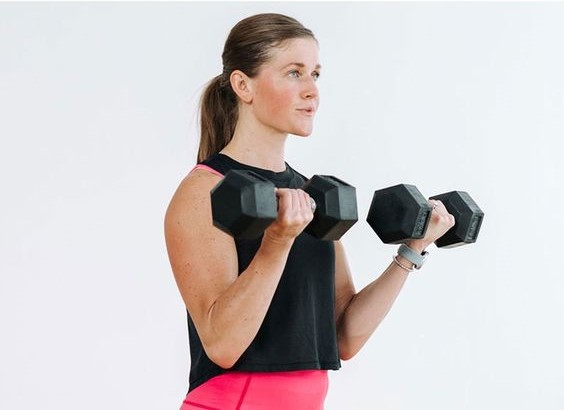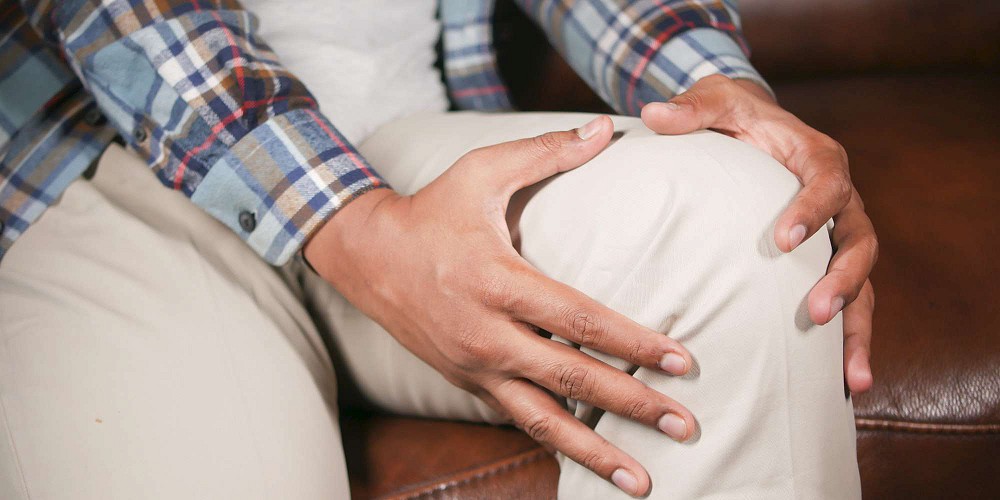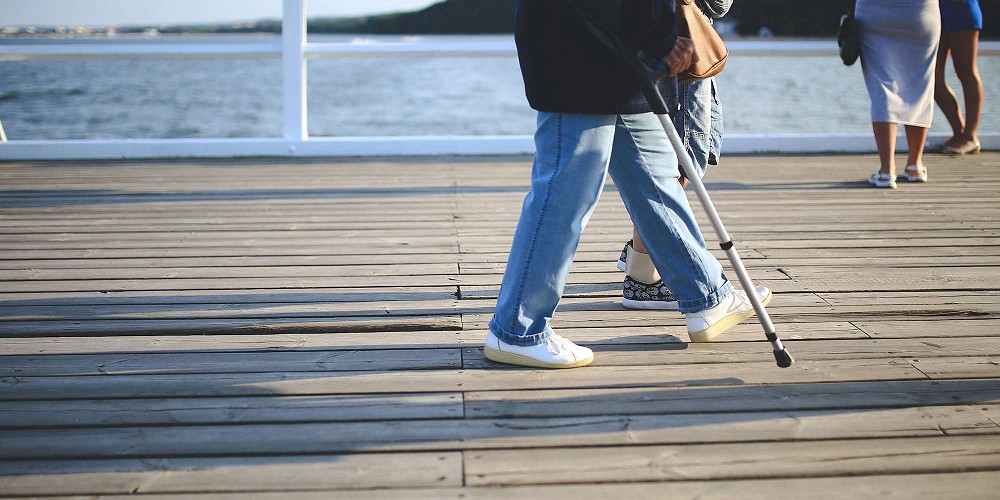DOMS: delayed onset muscle soreness
Article by Nicole Tos
Build an understanding of why our muscles get sore and help mitigate the discomfort associated with soreness.

WHAT is DOMS?
Delayed onset muscle soreness (DOMS) is described as a “sore, aching, painful feeling in the muscles after unfamiliar and unaccustomed intense exercise (1).” This means that you can potentially experience DOMS after a longer-than usual hike, especially if there is more elevation than you are used to, or from completing a typical exercise but with more weight or intensity. The soreness can be considered a type 1 muscle strain and usually is pain-free for 12-24 hours following activity, with peak soreness starting from 24-72 hours following the activity (1).
Although many people have experienced DOMS, the exact mechanisms behind what causes it are still somewhat unclear. Some proposed explanations for why DOMS occurs includes lactic acid build up, a muscle spasm, potential connective tissue or muscular damage, inflammation within the muscle, and the enzyme efflux theory – which is essentially the muscle losing enzymes quicker than the rate at which they replace them (2).
EXERCISE TYPES associated with DOMS:
Eccentric exercises, whereby the muscle elongates throughout the contraction, is typically most associated with having DOMS develop (3). To understand what an eccentric exercise is, think of a simple bicep curl: when you are at the top position of the contraction, hand close to shoulder region, slowly lowering the hand down until the arm is in a straight position. In this example, it is the bicep muscle that must produce an eccentric contraction to control the lowering of the hand.
Another few components to consider on top of the exercise type is the intensity, velocity, and duration of the exercise. As a rule, the higher the intensity and velocity of the exercise conducted, the higher the tor que created by the muscle which essentially can equate to the higher possibility for DOMS to occur (3). For exercise duration, there is no set minutes or seconds that tends to create more soreness, however, some research has demonstrated that any contraction held past 5 minutes does not demonstrate any further damage to the muscle tissue (3).

PREVENTION of DOMS:
Regarding the ability to prevent DOMS, emphasis is in pre-training and pre-loading the muscles to increase their ability to accept load. Some research has even demonstrated that when preventing the onset of DOMS associated with downhill running, participants could pre-train with either flat or down-hill running to help reduce in incidence of DOMS (3). More studies will help further our knowledge regarding what types of exercises will help prevent DOMS but it seems very promising that if you pre-load the muscles, you reduce the likelihood of intense soreness.
TREATMENT of DOMS:
- So, if you were unable to prevent DOMS in the first place and now have some soreness you need to try to get rid of, read on. Below is a list of studied interventions and a quick note on their effectiveness:
- Stretching – No change to soreness although very limited research demonstrated short-term pain reduction (2, 3).
- Icing – No effect (2, 3).
- Ultrasound – Has mixed evidence, one study demonstrated some benefit (3), however, at large no effect is noted (2).
- Electrical current modalities – No change in DOMS (2), may temporarily help reduce pain (3).
- Massage techniques – Varying results demonstrated throughout studies, depends on type and time but no specific application can be recommended to help reduce DOMS (2).
- Exercise – The MOST effective treatment for reducing pain, although effects may be only temporarily (2). The evidence is also unclear as to which type of exercise is the most effective at helping reduce the effects of DOMS.
- Dry Needling techniques – It remains inconclusive whether functional dry needling changes the effects of DOMS although acupuncture does not relieve symptoms of DOMS based on research trials (4).
As outlined above, DOMS can be a typical reaction to increased load when training and it seems that treatment techniques have mixed results for reducing the soreness. So, your best bet would be trying to prevent it in the first place. It can also be by trial and error that you discover what works best for you.
Feel free to come in and chat with one of our physiotherapists to help safely increase the load for your training and potentially attempt some treatment if DOMS has already set in.
Reference:
- https://www.physio-pedia.com/Delayed_onset_muscle_soreness_(DOMS)
- Cheung K, Hume P, Maxwell L. Delayed onset muscle soreness: treatment strategies and performance factors. Sports Med. 2003;33(2):145-64. doi: 10.2165/00007256-200333020-00005. PMID: 12617692.
- Cleak, M & Eston, Roger. (1992). Delayed onset muscle soreness: Mechanisms and management. Journal of sports sciences. 10. 325-41. 10.1080/02640419208729932.
- Fleckenstein, J., Niederer, D., Auerbach, K., Bernhörster, M., Hübscher, M., Vogt, L., & Banzer, W. (2016). No Effect of Acupuncture in the Relief of Delayed-Onset Muscle Soreness: Results of a Randomized Controlled Trial. Clinical journal of sport medicine: official journal of the Canadian Academy of Sport Medicine, 26(6), 471–477. https://doi.org/10.1097/JSM.0000000000000259
You May Also Like...
-
 ArticleView Post
ArticleView PostExercise Therapy for Knee Pain
Feeling pain radiating from under your kneecap? What is it, what causes it, and what can you do about it?
-
 ArticleView Post
ArticleView PostImproving & Managing Osteoarthritis
These tips can help improve and manage symptoms of osteoarthritis, the most common form of the 100+ variations of arthritis.
-
 ArticleView Post
ArticleView PostPhysiotherapy After Breast Cancer
Physiotherapists have an important role to play in the recovery process for patients who have had treatment for breast cancer.